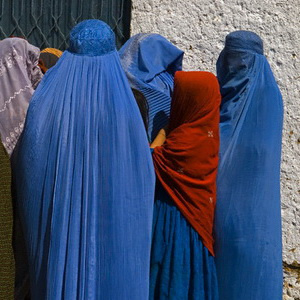On the Afghan immigrants’ deportation
A commentary by Morteza Kazemian

The Afghan officials have asked Iran to stop deportation of Afghan immigrants. According to these sources, Iran has recently deported five thousand Afghan families; and they are now living in a hard life in Nimrooz.
The Afghans’ immigration to Iran has a long story. In Shah’s era, some Afghans immigrated to Iran to find a job. After Afghanistan’s occupation by the Soviets, the Afghans’ immigration to Iran found political and ideological ground. In the era of communists’ rein on Afghanistan, one and a half million Afghans immigrated to Iran. They were allowed to live in different cities. But even then, many of them were illegal immigrants. After Mujahedeen’s victory in 1992, Iran tried to deport Afghan immigrants. But the Taliban rule and the wave of insecurity and economic problems in Afghanistan led to immigration increase to Iran.
The compulsory deportation of Afghan immigrants has been intensified during Ahmadinejad’s presidency. His administration sees this process as a solution to unemployment in Iran.
According to Iranian officials, more than 185 thousand Afghans have been deported in 2006. Last year, the number was much higher.
But the point is that the deported Afghan immigrants come back to Iran in a short while. The Iranian employers also do not wish to show their Afghan workers off. So the state attempts to track down the Afghans have not been much successful.
The discussions on Afghans’ deportation from Iran are like a double-edged sword. Criticizing the deportation of Afghans would be interpreted as ignoring the economic and social outcome of their presence in Iran. But at the same time, ignoring their deportation is the mere ignoring of human rights.
The Afghan immigrants have limited the options for Iranian workers. It is true. But is it a phenomenon only seen in Iran? No. The flow of Iranian workers to developed countries in search of a job showed that it is a global phenomenon.
The truth is that the events unfolding in Afghanistan have left no other choice for some of the immigrants. According to the statistics, in the last decade there were 500 thousand Afghan immigrants in Iran but this number has now reached the point of 3 million.
After the Taliban fall and the beginning of a new political and social chapter in Afghanistan, the expectations for the returning of Afghans to their country were high. But the desired security and stability in Afghanistan had not been achieved yet. In such a situation, it was not logical to expect the immigrants going home. Unemployment, insecurity, poverty and economic problems alongside with radicalism and the Taliban getting power have made the situation in Afghanistan much more complicated. In such a situation, the deportation of Afghans seems unacceptable.
The justification presented by Iranian officials is not also acceptable. They believe that the Afghans’ deportation would pave the way for more job opportunities for the Iranians. But the truth is that the Afghan workers are mainly employed in agriculture or construction or brick kiln or stockbreeding. These are the sectors which the Iranian workers do not show much tendency to work in. Many of Iranian workers do not want to work in construction sector.
On the other hand, the Iranian workers are much more educated than the Afghans. But the unemployment rate in illiterate workers is much less than the unemployment rate in those having a diploma or baccalaureate. An educated Iranian man does not want to do the simple job that an Afghan worker is doing. So it is naïve to think that with Afghans’ deportation, the problem of unemployment in Iran would be solved.
The highest unemployment rate in Iran is seen in western provinces like Ilam. But the number of Afghan immigrants in such provinces is very low. In provinces like Tehran and Isfahan which have the lowest unemployment rate, the number of Afghan immigrants is high but that does not interfere with the job market.
In case of Afghans’ not working in Iran, the expenses of stuff and services would be higher, so their deportation does not cure the malady of the market. What the government must do to tackle unemployment, is paving the way for university graduates and domestic and foreign investments.
The deportation of Afghan immigrants has been accompanied with limitations like their children’s deprivation of education and limitations on health services. According to immigration regulations, the immigrants should enjoy the right to have job, education, health and insurance services, passport and other things. Do the Afghan immigrants in Iran have the same options?
Immigration is a universal problem. But according to the declaration of human rights, Geneva Convention and the UN charter, all countries should be cautious in respecting immigrants’ rights.
The cultural, historical and religious backgrounds of Iran and Afghanistan are too many. So the issue of Afghan immigrants should be looked upon differently. The presence of Afghan immigrants in Iran imposes problems but humanity and morality calls for reconciliation with the immigrants of a neighbor country, Afghanistan.

